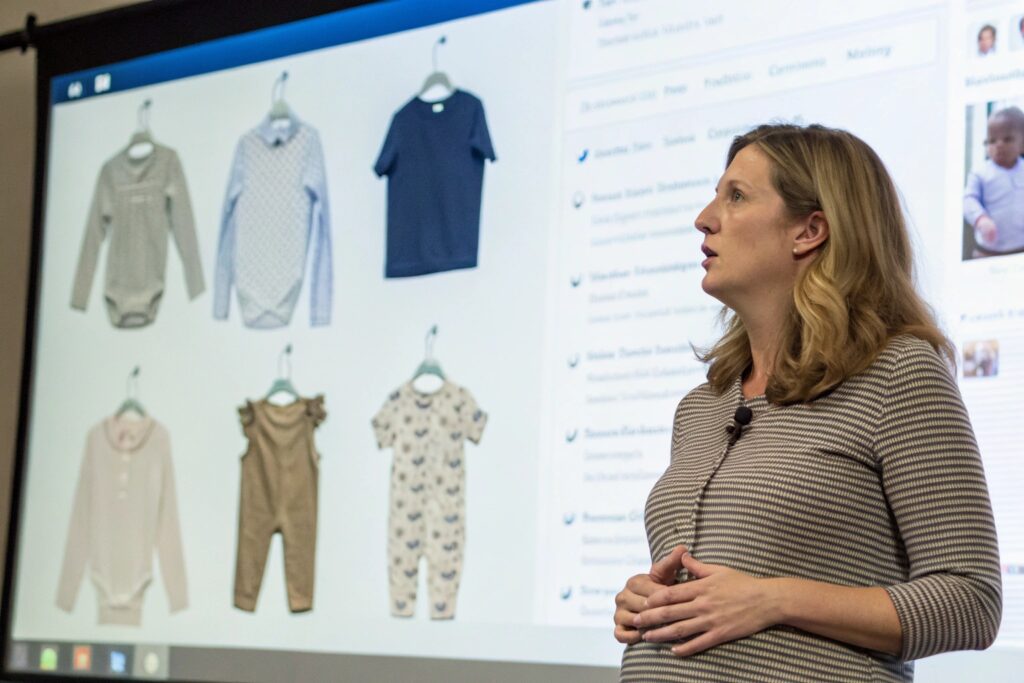Inventory is one of the biggest risks in scaling a babywear business. Produce too much—and you lose money in overstock. Produce too little—and you miss growth opportunities.
Yes, you can scale baby apparel production without carrying excessive inventory by using smarter models like pre-orders, made-to-order manufacturing, and data-driven planning.
Let’s explore how today’s most agile brands grow sustainably—without warehouses full of unsold rompers.
How Pre-Order and Made-to-Order Models Reduce Waste?
Traditional mass production often leads to excess stock, markdowns, and wasted resources—especially in fast-growing categories like babywear.
Pre-order and made-to-order models align production with actual customer demand, helping brands reduce risk, increase cash flow, and improve sustainability.

What’s the difference between pre-order and made-to-order?
| Model Type | How It Works |
|---|---|
| Pre-order | Customers buy before production begins (2–4 week wait) |
| Made-to-order | Items are only produced after an order is placed (1–2 week lead) |
Why this works for babywear brands:
- Reduces fabric and labor waste
- Avoids size imbalances (e.g. too many 3M, not enough 12M)
- Improves cash flow—you’re paid before you produce
- Supports storytelling—"Each piece is made just for you"
Parents are increasingly comfortable with a short wait, especially when personalization or sustainability is involved.
Why Small-Batch Manufacturing Supports Smarter Growth?
You don’t need to produce thousands of units to grow—you need to produce the right ones in the right quantities at the right time.
Small-batch manufacturing supports scaling by allowing frequent drops, real-time feedback, and faster sell-through—without tying up capital in dead stock.

Benefits of small-batch scaling:
- Low MOQ (as low as 100–300 pcs/style) supports test runs
- Less waste—you can sell through inventory before producing more
- More design agility—respond to trends and feedback faster
- Built-in scarcity—limited drops create urgency
| Growth Goal | Small-Batch Advantage |
|---|---|
| Test new designs | Sample → 100 pcs → scale if it sells |
| Offer more variety | 3 designs × 100 pcs instead of 1 × 1000 |
| Avoid overproduction | Produce based on weekly/monthly sales data |
| Engage community | Let followers vote on colors or prints |
This model is ideal for DTC brands, baby boutiques, or seasonal product launches.
What Inventory Strategies Help Balance Demand and Supply?
Scaling doesn’t mean going all in—it means getting smarter. A mix of production models and stock strategies can support flexibility and growth.
Modern babywear brands use tiered inventory strategies to stay lean while fulfilling demand across DTC, wholesale, and pre-order channels.

Smart inventory strategies include:
- Core vs seasonal splits: Keep basics in stock, rotate designs
- Bundle-friendly SKUs: Use overlapping sizes and neutral palettes
- Rolling restocks: Place smaller orders more frequently
- Just-in-time logistics: Sync your lead time with marketing windows
- Buffer for top sellers: Hold 10–20% safety stock for hero products
| Inventory Tier | Strategy to Balance Risk |
|---|---|
| Evergreen styles | Produce in volume, track 3-month sell-through |
| Trend-driven pieces | Make in small batches, rotate often |
| Personalized items | Made-to-order or pre-order only |
| Wholesale orders | Produce to confirmed PO |
It’s not about zero inventory—it’s about controllable inventory.
How Data-Driven Planning Minimizes Overstock in Babywear?
Guessing leads to inventory loss. Data leads to profit. Especially in babywear, where sizes turn over quickly and seasonality matters.
Using real-time data from your store, social channels, and previous launches helps you plan smarter, reduce overstock, and scale confidently.

What data should you track?
- Size and color sell-through rates (Which sizes move fastest?)
- Pre-order signups or waitlists
- Bounce rate and abandoned cart data by SKU
- Influencer-driven product interest
- Repeat purchase frequency per customer
| Forecasting Method | Inventory Benefit |
|---|---|
| Use past seasonal sales | Adjust quantity per size and SKU |
| Set product limits in Shopify | Create scarcity while testing demand |
| Track social interest | Use comment/survey data to prioritize styles |
| Sync drops with customer lifetime data | Restock based on when users return |
You don’t need big software to start. Even simple tools like Google Sheets + Shopify reports can give you insights that save thousands.
Conclusion
Yes, you can scale babywear without drowning in inventory. Through pre-orders, small-batch production, smart inventory tiers, and data-driven planning, your brand can grow lean, fast, and sustainably. The future isn’t just about more—it’s about better.










